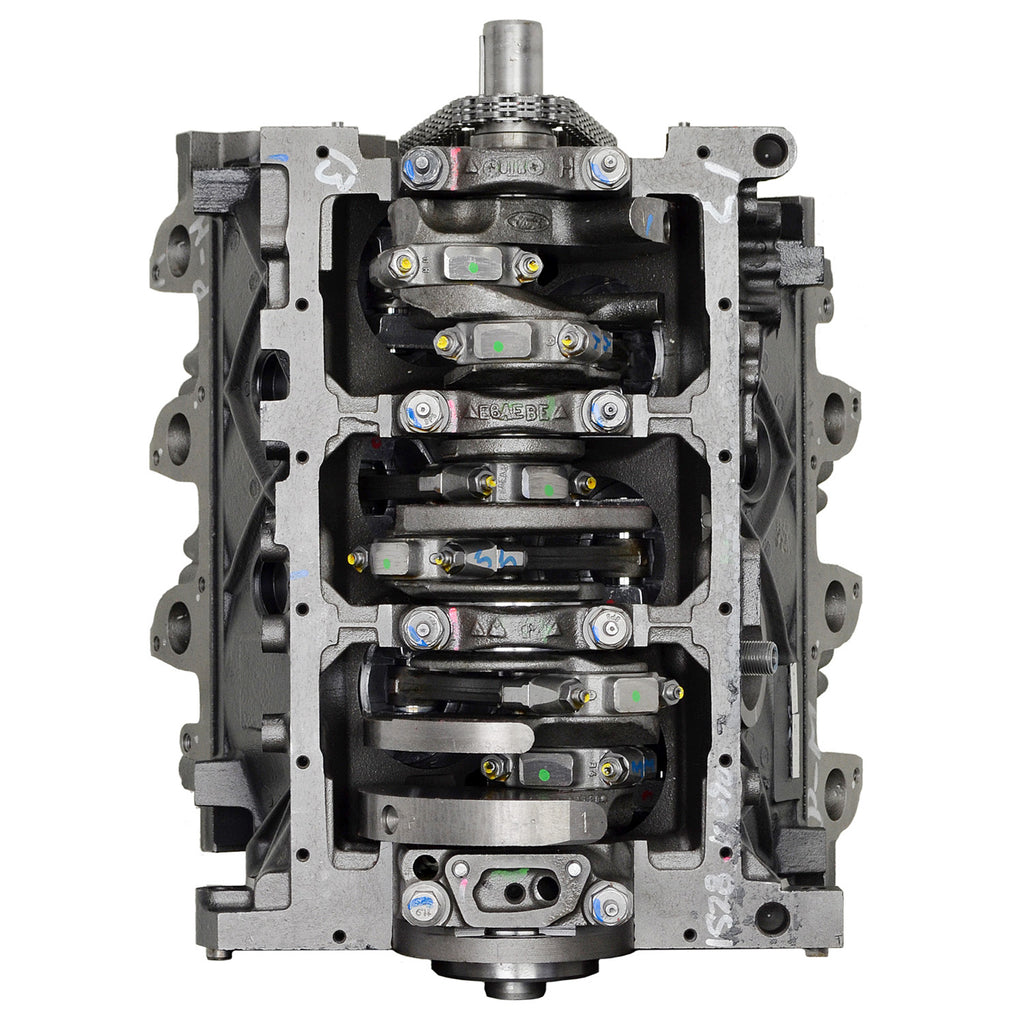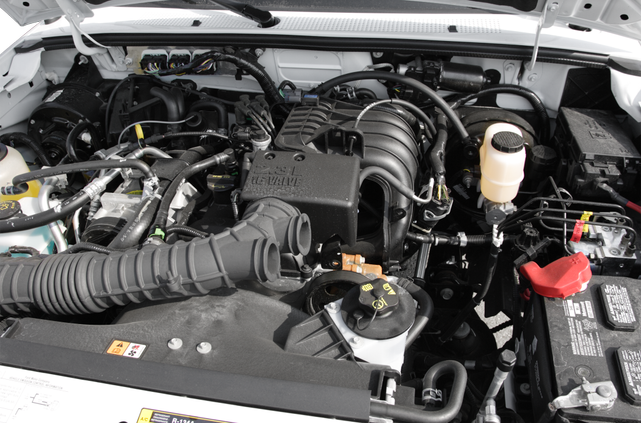How the 2.2 Ford Ranger Engine Delivers Power and Efficiency for Your Truck
How the 2.2 Ford Ranger Engine Delivers Power and Efficiency for Your Truck
Blog Article
Understanding the Essentials of Auto Engines: Types, functions, and features

Introduction of Vehicle Engines
A car engine serves as the heart of an automobile, converting gas right into mechanical power to propel it ahead. This intricate system comprises different elements that operate in unison to make sure ideal performance and effectiveness. The essential procedure of an automobile engine includes the internal combustion procedure, in which fuel and air are blended, stired up, and expelled to create power.
The engine's design can dramatically impact its efficiency, fuel efficiency, and emissions. Trick components consist of the cylinder block, pistons, crankshaft, and camshaft, each playing a crucial function in the engine's total function.
Along with these elements, engines commonly use numerous systems such as gas injection, ignition, and cooling systems to improve performance and durability. Comprehending the fundamental mechanics of vehicle engines is vital for doing and identifying issues upkeep, eventually adding to the car's dependability and effectiveness with time.

Sorts Of Vehicle Engines
Car engines can be classified into a number of kinds based on their design, gas kind, and operational concepts. 2.2 ford ranger engine. The most common categories consist of inner burning engines (ICE), electrical engines, and crossbreed engines
Interior burning engines, which can be more divided right into gasoline and diesel engines, operate by igniting a fuel-air mixture to produce power. Gasoline engines are normally lighter and smoother, while diesel motor are more fuel-efficient and deal higher torque.
Electric engines use electric energy kept in batteries to power an electrical motor, offering immediate torque and no emissions throughout procedure. As technology developments, electrical automobiles (EVs) are progressively coming to be popular for their environmental advantages and reduced running prices.
Hybrid engines incorporate components of both interior burning and electric engines, permitting for versatile power sources and enhanced fuel performance. They can run in numerous modes, making use of either the gas engine, the electrical motor, or both all at once.
Each kind of engine has distinctive advantages and drawbacks, affecting their application in different car kinds and market sectors, from compact autos to heavy-duty trucks. Comprehending these types is essential for making educated choices concerning car choice and performance expectations.
Engine Features Explained
Understanding engine features is critical for grasping just how vehicles run successfully. At the core of any kind of interior combustion engine lies the basic process of converting fuel into mechanical energy. This process starts with the intake stroke, where air and gas are drawn right into the burning chamber. Following this, the compression stroke compresses the air-fuel blend, raising its temperature level and pressure.
The ignition occurs next, firing up the combination and creating a quick development of gases. This pressure drives the piston down during the power stroke, which eventually equates right into the rotational movement of the crankshaft. The exhaust stroke after that gets rid of the spent gases from the chamber, making means for a brand-new cycle to begin.
In addition to these main functions, engines additionally include systems that manage cooling and lubrication, making certain optimum functional temperature levels and lowering rubbing in between moving components. This detailed interplay of functions enables the engine to generate the power necessary for lorry propulsion while keeping efficiency and integrity. Understanding these functions supplies important understanding right into the intricacies of vehicle design and enhances the ability to detect and address engine-related concerns find more info properly.
Trick Engine Attributes
Engine style includes a number of essential functions that significantly influence durability, performance, and performance. One of the most crucial elements is the engine configuration, that includes inline, V-type, and level layouts. Each setup influences the engine's power, equilibrium, and dimension result, consequently influencing general vehicle characteristics.
An additional necessary attribute is the engine displacement, describing the total quantity of all cylinders. Larger variations commonly generate more power yet may endanger fuel performance. Engine products additionally play an essential function; lightweight and high-strength products, such as aluminum and magnesium alloys, enhance efficiency without adding excessive weight.
The type of fuel injection system employed-- such as straight or multi-port shot-- influences burning efficiency and emissions. Turbo charging and turbocharging are attributes that improve engine performance forcibly added air right into the burning chamber, raising power result without significantly enhancing engine dimension.
Last but not least, the visibility of innovative engine management systems maximizes fuel-air mixture and ignition timing, adding to smoother procedure and better fuel economic situation. Jointly, these functions define an engine's capabilities, setting the foundation for its performance and long life in a competitive automotive landscape.
Upkeep Tips for Engines
Correct engine upkeep is critical for guaranteeing optimum performance and long life, as overlooking regular care can lead to substantial problems down the line. To maintain your engine successfully, start with normal oil modifications, usually every 3,000 to 7,500 miles, depending upon the kind of oil made use of. Fresh oil lubricates engine parts, decreasing friction and wear.
In addition, monitoring coolant levels is important to prevent getting too hot. Ensure that the coolant is topped up and is in great condition to maintain efficient temperature regulation. Consistently evaluate and replace air and fuel filters, as clogged up filters can impede airflow and gas shipment, jeopardizing engine performance.
Moreover, take notice of ignition system and ignition systems. Faulty or worn ignition system can lead to misfiring and decreased efficiency. Examining the battery terminals and links for rust is also necessary, as a weak battery can impact engine starting.
Verdict
In summary, a thorough understanding of car engines incorporates numerous types, functions, and vital functions that dramatically affect automobile performance. Inner burning engines, along with hybrid and electric options, demonstrate varied devices for power conversion. 2.2 ford ranger engine. Acknowledging the important features, such as intake and exhaust cycles, together with vital engine functions like setup and gas shot systems, outfits cars and truck proprietors with the knowledge essential for reliable maintenance and operation, inevitably improving lorry long life and efficiency
An auto engine serves as the heart of a lorry, transforming gas right into mechanical power to drive it onward. The basic operation of a cars and truck engine includes the internal combustion procedure, wherein gas and air are combined, sparked, and eliminated to produce power.
Routinely replace and evaluate air and fuel filters, as blocked filters can hinder air movement and gas distribution, compromising engine performance. - 2.2 ford ranger engine
In recap, an extensive understanding of auto engines includes numerous types, features, and crucial features that substantially influence automobile efficiency. Acknowledging the important features, such as intake and exhaust cycles, together with important engine features like configuration and gas shot systems, equips vehicle owners with the understanding required for reliable maintenance and my website procedure, eventually enhancing vehicle longevity and performance.
Report this page